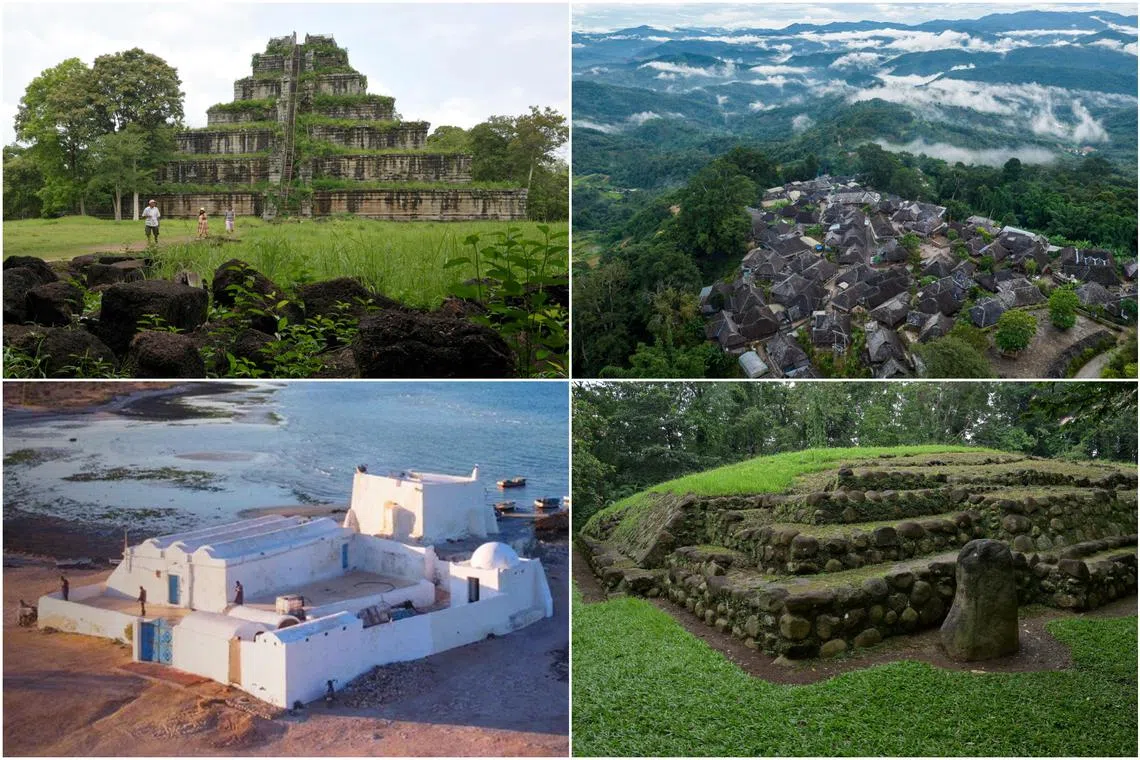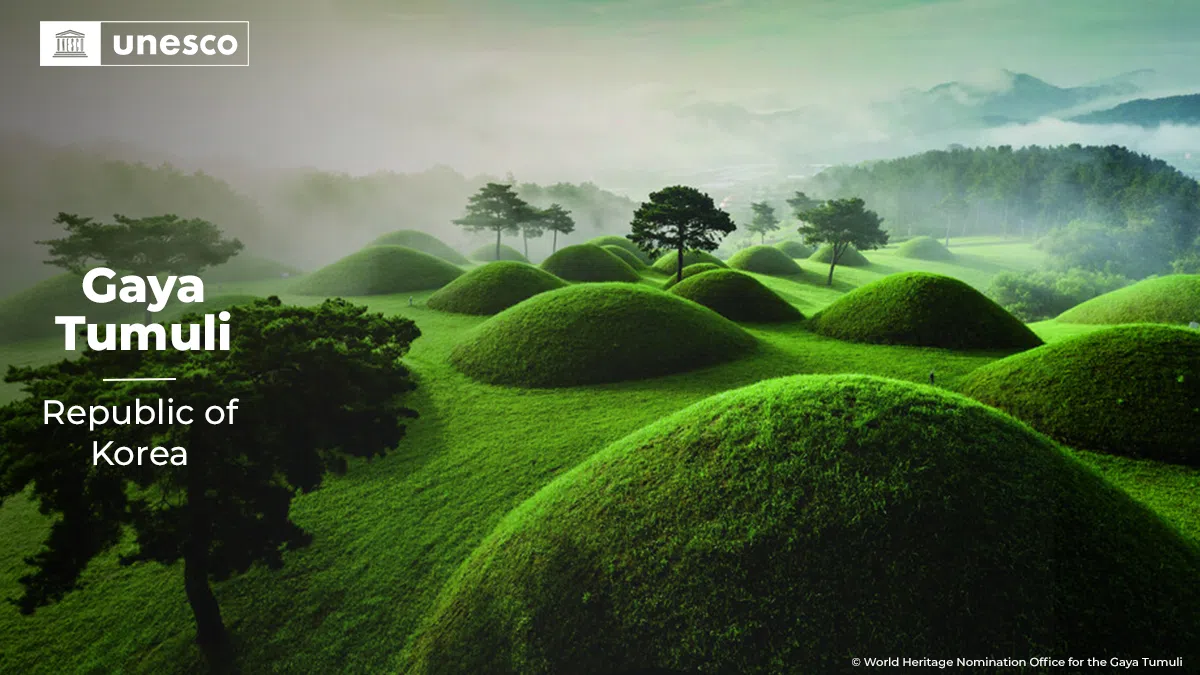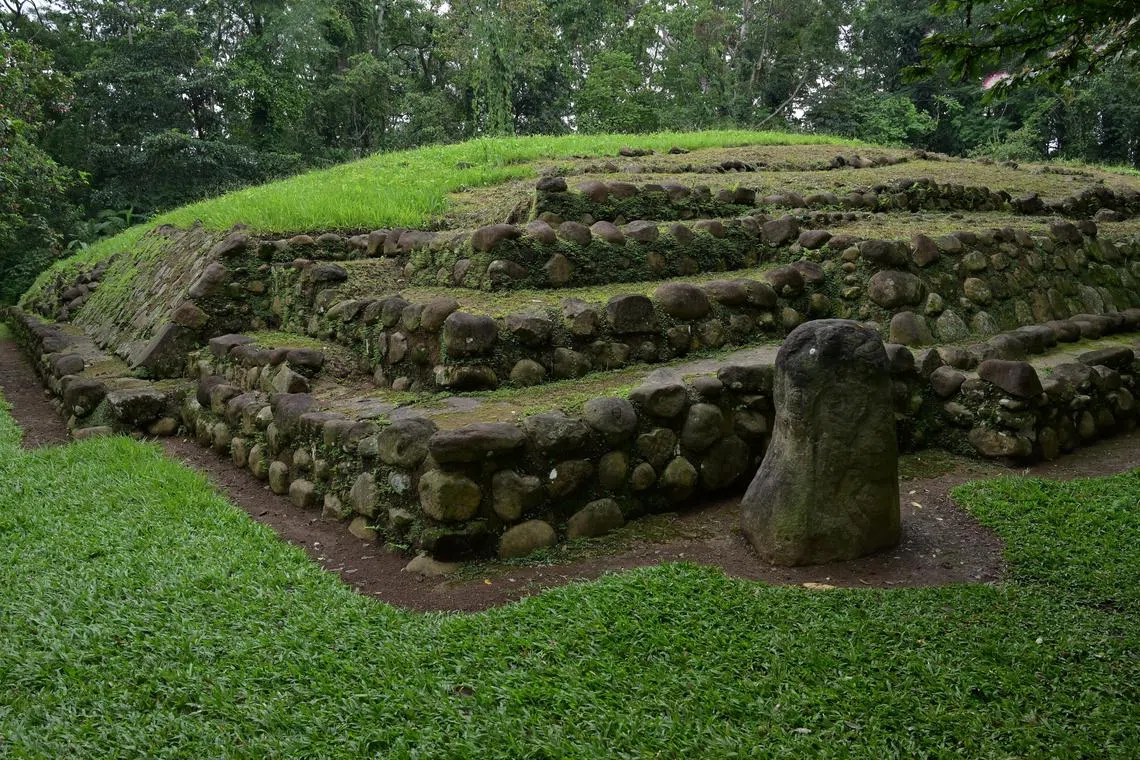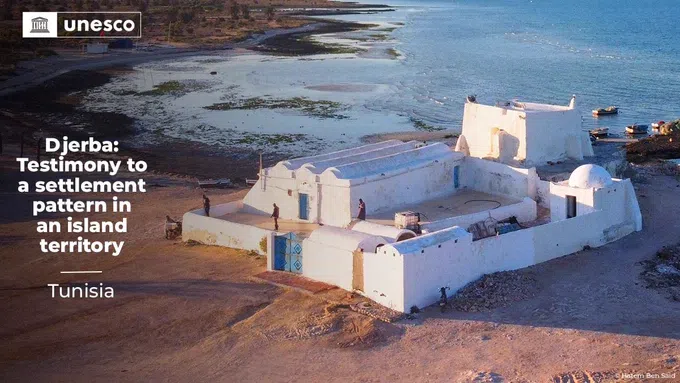Here are some of Unesco’s new World Heritage sites
Sign up now: Get insights on Asia's fast-moving developments

Unesco unveiled some new sites on its World Heritage List on Tuesday.
PHOTOS: AFP, XINHUA, UNESCO/X, REUTERS
Follow topic:
The United Nations’ cultural organisation, Unesco, has unveiled some new sites on its World Heritage List. Here are some of them:
Koh Ker archaeological site, Cambodia

This photo taken on May 14, 2012 shows tourists walking at the Koh Ker temple area in Preah Vihear province. The Koh Ker temple area, located some 120 kilometres away from Siem Reap, was listed as a UNESCO World Heritage Site, the Cambodian government said on September 17, 2023. (Photo by TANG CHHIN Sothy / AFP)
PHOTO: AFP
The ancient temple complex
Constructed over 23 years, it was one of two rival Khmer Empire capitals – the other being Angkor – and was the sole capital in the period from 928 to 944.
Cultural landscape of old tea forests of Jingmai Mountain in Pu’er, China

新华社照片,普洱(云南),2023年9月18日 改革故事|普洱景迈古茶山上的新生活 被山林与茶园环绕的景迈山翁基古寨一景(无人机照片,9月17日摄)。 9月17日,中国“普洱景迈山古茶林文化景观”申遗项目在第45届世界遗产大会上通过审议,列入《世界遗产名录》,成为中国第57项世界遗产。喜讯传到景迈山,身着民族服饰的人们唱起歌、跳起舞蹈庆祝。 公元10世纪,布朗族先民迁徙至景迈山,发现和认识野生茶树,利用森林生态系统,与后续来到的傣族等各族一起,探索出“林下茶”种植技术,历经千年的保护与发展,形成这一林茶共生、人地和谐的独特文化景观。 多年来,当地政府和村民都致力于保护景迈山“山共林、林生茶、茶绕村”景观结构。保护好完整的自然景观和传统村落,也要让村民过上现代化的生活。在景迈山,汽车、电视机、智能手机、5G互联网都不稀奇。许多村民用智能手机在直播间卖茶,或者将自家采茶、制茶的照片发布在社交媒体,吸引人们前来观光、买茶。 年近八旬的布朗族老人苏国文说:“遗产是人创造的,守住遗产也要靠人。要继续弘扬民族传统文化,世代保护好这片土地。” 如今,通过产业联动、完善服务体系等方式,景迈山走出了一条“以茶促旅、以旅带茶、茶旅互融”的乡村振兴之路。在保护中发展,满山绿叶变“金叶”,越来越多游客和茶商慕名到景迈山,带动当地餐饮、住宿等发展,村民的生活越过越红火。 新华社记者 胡超 摄
PHOTO: XINHUA
Located on Jingmai Mountain in south-western China
The cultural landscape was jointly created by the ancestors of the Blang people – who immigrated to Jingmai Mountain in the 10th century, and later discovered and domesticated wild tea trees – and the indigenous Dai people.
Gaya Tumuli, South Korea

PHOTO: UNESCO/X
The site is an archaeological cemetery with burial mounds attributed to South Korea’s ancient Gaya confederacy.
According to Yonhap news agency, Gaya was a loosely knit federation of six or seven small kingdoms that prospered between the first and sixth centuries in the southern and central regions of the Korean peninsula.
The tumuli consist of seven clusters of tombs in the architectural style of graves built in the fourth and fifth centuries, along with burial accessories and goods showing Gaya’s network of trade and handcrafted manufacturing.
Hoysala temples, India

PHOTO: UNESCO/X
Built in the 12th to 13th centuries, the Hoysala temples are located in the southern state of Karnataka. The temples are known for evolving a distinctive ornate style, with temple architecture following a stellate plan built on a raised platform, according to The Hindu.
The material used in the temple construction is chloritic schist, also known as soapstone, which is soft and amenable to carving, the Indian newspaper reported.
According to Unesco, the shrines are characterised by “hyper-real sculptures and stone carvings” that cover the entire architectural surface, a circumambulatory platform, a large-scale sculptural gallery, a multi-tiered frieze, and sculptures of the Sala legend.
Tak’alik Ab’aj national archaeological park, Guatemala

A view shows Guatemala's Tak'alik Ab'aj National Archaeological Park, which was designated by UNESCO as a World Heritage Site, in El Asintal, Retalhuleu, Guatemala, in this handout picture distributed to Reuters on September 18, 2023. Guatemala Ministry of Culture/Handout via REUTERS THIS IMAGE HAS BEEN SUPPLIED BY A THIRD PARTY. NO RESALES. NO ARCHIVES
PHOTO: REUTERS
Tak’alik Ab’aj is a 1,700-year-old Guatemalan archaeological site associated with the rise of early Maya civilisation.
It was a cosmopolitan commercial hub inhabited first by an ancient group known as the Olmecs and later by the Maya.
The site in modern-day El Asintal, about 200km west of Guatemala City, boasts buildings, sculptures, ceremonial squares and items bearing the writing of both civilisations.
Guatemalan Culture Minister Felipe Aguilar told Agence France-Presse that the site was considered the birthplace of the Maya culture. “That is what makes it unique.”
Djerba, Tunisia

PHOTO: UNESCO/X
The Tunisian resort island of Djerba is famous for its ancient ruins, whitewashed villages, mosques, churches and synagogues.
Djerba is considered to be the mythological island in Homer’s Odyssey, where Odysseus and his companions encounter the lotus eaters. It was also featured in the Star Wars movies as part of the planet Tatooine.
Known for its religious diversity, the island has churches, synagogues including the Ghriba, the oldest in Africa, and fortified mosques from the Ibadi school of Islam, some of which are underground.
It is also famous for its Carthaginian and Roman ruins, and also traditional houses known as “houch”, which have an interior courtyard and ingenious systems to collect rainwater. AFP, CHINA DAILY/ASIA NEWS NETWORK

